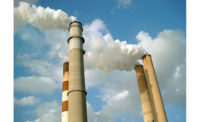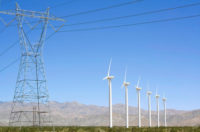All retail power suppliers must obtain 100% clean electricity for customers by 2035 under a bill introduced March 2 by Democratic leaders of the House Energy and Commerce Committee that is meant to combat the climate crisis.
The ambitious plan authorizes $565 billion over 10 years to cut U.S. greenhouse gas emissions to zero by 2050, and calls for a 50% cut from all sources by 2030 as an interim step to full decarbonization.
Dubbed the CLEAN Future Act, the 981-page bill mandates that all retail suppliers provide an increasing amount of clean power starting in 2023, rising to 80% in 2030 and 100% by 2035, under a clean energy standard
Committee chair Frank Pallone of New Jersey introduced the bill, along with subcommittee chairs Paul Tonko of New York and Bobby L. Rush of Illlinois.
The standard also requires that workers be paid prevailing wages for the construction of that new power generation and that owners and operators of all participating qualifying facilities not interfere with the right to organize and bargain.
The bill also gives the federal government authority to build out the electric transmission system to reach those clean energy goals.
But it also gives states flexibility to develop plans to meet targets based on their own policy preferences, priorities and circumstances.
“The net-zero 2050 target is considered moderate compared with the Green New Deal, which aims for net-zero emissions by 2030,” say attorneys at law firm Holland & Knight in an energy and natural resources blog. The plan allows states to develop their own climate action plans to submit to the U.S. Environmental Protection Agency, which “nods toward opportunities for bipartisan negotiation,” the attorneys say.
Energy Savings Targets
The bill sets national energy savings targets for model building energy codes, leading to zero-energy-ready buildings by 2030. It also sets energy and water savings targets for federal buildings.
A funding mechanism in the bill called a Clean Energy Sustainability Accelerator would help states with the transition. Modeled after green banks currently in use around the country, the accelerator would be capitalized at $100 billion to finance low and zero emission energy technologies, climate resilience projects, building efficiency and electrification, industrial decarbonization, grid modernization and clean transportation.
The legislation sets targets to reduce emissions from construction materials and products used in projects that receive federal funding, noting that the “vast majority of U.S. construction projects” contain some federal funding.
A new White House Office of Energy and Economic Transition would coordinate programs that support workers and communities affected by the transition to net-zero emissions, including dislocated workers and financial assistance to local governments to replace lost tax revenue because of major employer closures.
The bill supports construction of infrastructure for a clean transportation system, including electrification of ports. It calls the transportation sector the largest source of greenhouse gas pollution and supports expanded manufacturing in the U.S. of advanced automotive technologies.
Federal agencies must use all existing authority to put the country on a path toward reaching the zero-emission targets under the proposal. The proposed legislation establishes a Clean Economy Federal Advisory Committee to evaluate each agency’s plans.
Environmental justice consideration must be taken into account by each federal agency and must be included in environmental laws under the proposal. It includes cleanup of brownfields and Superfund sites, and lead service line replacements.
The bill includes grants to communities to participate in permitting and regulation of petrochemical and hazardous waste disposal facilities in their neighborhoods. “It further protects these groups by implementing strong new coal-ash disposal requirements and repealing oil and gas production exemptions from landmark environmental laws,” the House committee said in comments.
Also in the legislation are new clean-air permitting requirements on industrial facilities that produce plastics, and reforms of outdated recycling and waste management systems.
The legislation is a result of 27 House hearings over the past two years. Hearings on the new bill have not yet been scheduled.






Post a comment to this article
Report Abusive Comment